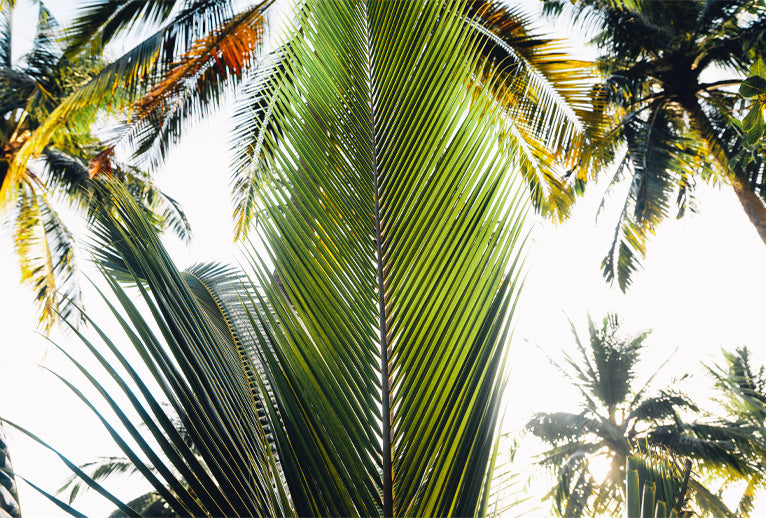Symptoms of Damage:
Small and irregular hole on the leaves. Silken spin stick strand bags below the leaf.

Small irregular holes
Identification of the Pest
Larva: Inside the conical bags constructed with silk and thread
Management
Chemical Method
Collect and destroy the immature stages of the wherever possible and spray carbary 50 WP 2 gm/lit.
Spray dichlorvas 76 WSC 2 ml / lit.
Mechanical Method:
Set up light traps to trap and collect adult moths.
White Grub/ Cockchafer Beetle: Leucopholis coneophora
These cream-colored grubs are abundant in sandy loam areas of Kerala and Karnataka, particularly during September to October, with beetles emerging in May and June.
Symptoms of Damage:
In nurseries, these grubs feed on tender roots and tunnel into the collar region of the trunk, causing drying and yellowing. In mature plantations, their presence leads to yellowing leaves, premature shedding of nuts, delayed flowering, slowed growth, and reduced yields. White grubs are visible when the base of the tree is excavated.Intercropped tuber crops are also vulnerable to their impact.

Identification of the Pest:
Egg: Oval in shape and creamy white in color when freshly laid. Prior to hatching they turn to dirty white.
Grub: Curved, fleshy and wrinkled. They are creamy white in color with brown head.
Adult: Brown coloured beetle with striated wings not covering the abdomen fully
Management:
Cultural Method:
Plough the soil once a week for 4 to 5 weeks after the first summer rains to reduce pest populations. This exposes the pests to predation by birds and other animals.
After rainfall, plant neem twigs with leaves in coconut gardens to attract and kill adult beetles.
Synchronize ploughing or digging of infested soil with pre-monsoon showers for effective pest management.
Mechanical Method:
Set up light trap @ 1 / ha or bonfire
Chemical Method:
Soil application - Malathion 5 D 25 kg/ ha at the time of planting (Treat the soil with phorate 10G @ 100 g/palm or drench with chlorpyrifos 0.04% suspension. The treatment should be given twice, first during April-May after the receipt of pre-monsoon showers and second during the month of September - Recommended by KAU).
Physical Method:
Collect and destroy the adult beetles attracted to trees like neem, Ailanthus and Acasia on the receipt of monsoon showers (in the evening).
